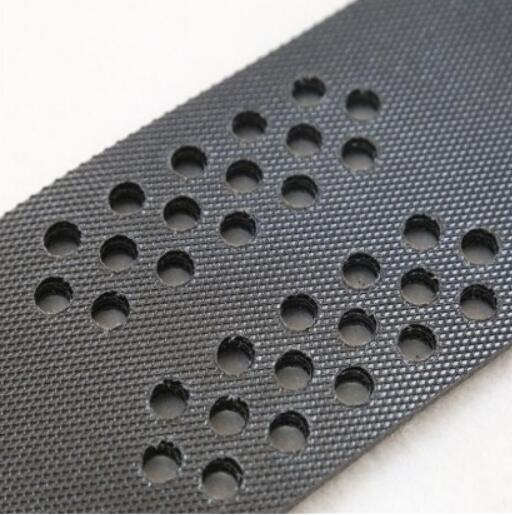- Understanding the Role of Geomembrane Liners in Waste Management
- Innovations in Geomembrane Liners for Water Management
- Geomembrane Liners: A Comprehensive Guide
- The Future of Geomembrane Liners in Civil Engineering
- Geomembrane Liners: Enhancing Landfill Stability
Manager:
WhatsApp:+86 177 0135 2670
Tel:+86 177 0135 2670
Email:marketing@okorder.com
Address:3rd Floor, No.2 Building, No.1 Sanlihe Road
Geomembrane Liners: Enhancing the Safety of Chemical Storage Facilities
Chemical storage facilities are an essential part of many industries, from manufacturing to agriculture. But with great power comes great responsibility, and that includes ensuring the safety of these facilities. One of the key components in achieving this is the use of geomembrane liners. These versatile materials offer a range of benefits that can enhance the safety and efficiency of chemical storage. Let's dive into the world of geomembrane liners and explore their role in chemical storage safety.

The Science Behind Geomembrane Liners
Before we get into the specifics of how geomembrane liners contribute to safety, it's important to understand what they are. Geomembrane liners are large, flexible sheets made from high-density polyethylene (HDPE) or other polymers. They are designed to create a barrier between the stored chemicals and the surrounding environment, preventing leakage and contamination. The science behind these liners is fascinating. The polymers used are chosen for their chemical resistance, durability, and ability to withstand a wide range of temperatures.
Sealing the Deal on Chemical Containment
One of the primary concerns with chemical storage is containment. You don't want those chemicals mixing with the environment, and that's where geomembrane liners come in. They form a tight seal that prevents any accidental spills or leaks from reaching the soil, groundwater, or surface water. This is crucial for protecting both the environment and the communities that live nearby.
A Durable Solution for Long-Term Safety
Durability is another key factor in the safety of chemical storage facilities. Geomembrane liners are built to last, with a lifespan that can span decades. This means they provide a long-term solution to containment issues, reducing the need for constant maintenance and replacement. Less frequent maintenance also means fewer opportunities for accidents to occur during the repair process.
Temperature Resistance: A Key Factor in Safety
Chemical storage facilities often deal with substances that can be sensitive to temperature changes. Geomembrane liners are designed to handle a wide range of temperatures, from the freezing cold to the blistering heat. This ensures that the liners won't crack or degrade under extreme conditions, maintaining their integrity and preventing leaks.
The Role of Geomembrane Liners in Emergency Response
In the unfortunate event of a chemical spill or leak, geomembrane liners can play a crucial role in emergency response. They can act as a secondary containment system, catching any leaked chemicals and preventing them from spreading further. This can buy valuable time for emergency responders to contain the situation and mitigate any potential damage.
Customization for Specific Chemicals
No two chemical storage facilities are the same, and neither should their liners be. Geomembrane liners can be customized to suit the specific needs of each facility. This includes tailoring the liner's material to resist certain chemicals, adjusting the thickness for added strength, or even adding specific features like leak detection systems. This level of customization ensures that each facility has the most effective and safe containment solution possible.
The Environmental Impact of Geomembrane Liners
While the primary focus is on safety, it's also worth considering the environmental impact of geomembrane liners. These liners help prevent chemical contamination of soil and water, which can have far-reaching effects on ecosystems and human health. By using geomembrane liners, facilities can take a proactive approach to environmental stewardship.
The Human Element: Training and Education
Technology and materials are important, but they're only part of the equation. The human element is crucial in ensuring the safe operation of chemical storage facilities. Training and education on the proper handling and maintenance of geomembrane liners are essential. This includes understanding the science behind the liners, recognizing potential signs of wear or damage, and knowing the correct procedures for repair or replacement.
The Future of Geomembrane Liners
As technology advances, so too do the capabilities of geomembrane liners. We can expect to see improvements in material science, allowing for even more durable and chemical-resistant liners. Additionally, advancements in leak detection and monitoring systems will further enhance the safety of chemical storage facilities. The future looks bright for geomembrane liners and the role they play in protecting our environment and communities.
In conclusion, geomembrane liners are a vital component in enhancing the safety of chemical storage facilities. They offer a durable, customizable, and environmentally friendly solution to the complex issue of chemical containment. With proper training, maintenance, and ongoing advancements in technology, these liners will continue to play a crucial role in protecting our environment and ensuring the safety of those who work with and live near chemical storage facilities.
- Previous:The Role of Geomembrane Liners in the Oil and Gas Industry
- Next:The Advantages of Geomembrane Liners Over Traditional Lining Methods






